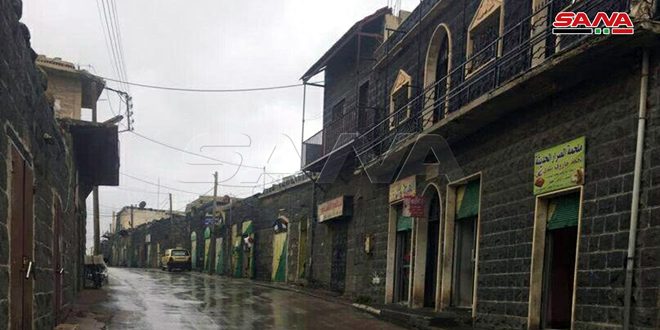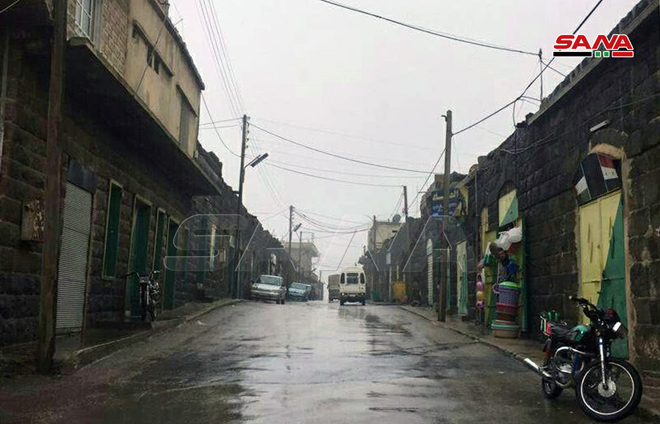In the town of Malh, located southeast of the city of Sweida, the old market stands amidst the traditional urban fabric of the town, a testament to centuries of commercial and social activity that characterized the mountainous communities of southern Syria. Despite its simplicity in size and design, this market holds great cultural value as it represented the beating heart of the town’s daily life.
The market was built in a traditional folk style, consisting of opposing rows of shops built of black basalt stone and roofed with wood or local tiles. The market opened its doors every morning, with residents of Malh and neighboring villages flocking to it to exchange goods and purchase their needs — from grains and agricultural products to household items and handicrafts.
The Malh market also had a social significance. It served as a meeting place for residents to exchange conversations and news. It was known for its conservative and calm character, reflecting the nature of the town and its inhabitants. The market played an important economic role in linking local agricultural production to the consumption cycle, especially during the harvest seasons.
Despite lifestyle changes and the conversion of some parts of the market to modern uses or their abandonment, the market still retains some of its architectural character and traditional spirit. With the lack of restoration and documentation, it is threatened with a gradual loss of its identity.
Documenting the market in the town of Malh today is not merely a record of a stone building; it is the preservation of a part of the life that once pulsed in the heart of the town. It is a restoration of the memory of the place, the voices of the vendors, and the footsteps of the women and men who passed by carrying their wheat, oil, and daily conversations. It is a small scene, but it is rich with everything that makes heritage alive and inspiring.








